The core technical parameters of the slitting machine (precision, speed, tension control) directly affect the quality and production efficiency of slitting. The following is a detailed analysis of these three parameters and their interrelationships:
1. Accuracy (slitting accuracy)
Definition: Slitting accuracy refers to the width deviation (such as ±0.1mm) or edge uniformity of the material after slitting, which is a key indicator to measure the core performance of the slitting machine.
Key Factors:
• Mechanical structure: high-rigidity frame, precision guide rails (e.g. linear guides), servo drive system to reduce vibration and deviation.
• Insert type: choice of round knife (for high speed) or flat knife (for high precision), as well as the material of the tool (carbide/ceramic) and wear condition.
• Web correction system: Photoelectric or ultrasonic sensors monitor the edge position of the material in real time, and adjust the lateral position of the material through closed-loop control.
• Material properties: The ductility and thickness uniformity of different materials such as film and paper will affect the actual slitting accuracy.
Application Scenarios:
• Lithium battery separator slitting requires an accuracy of ≤± 0.05mm, while ordinary packaging film may only need to ± 0.2mm.
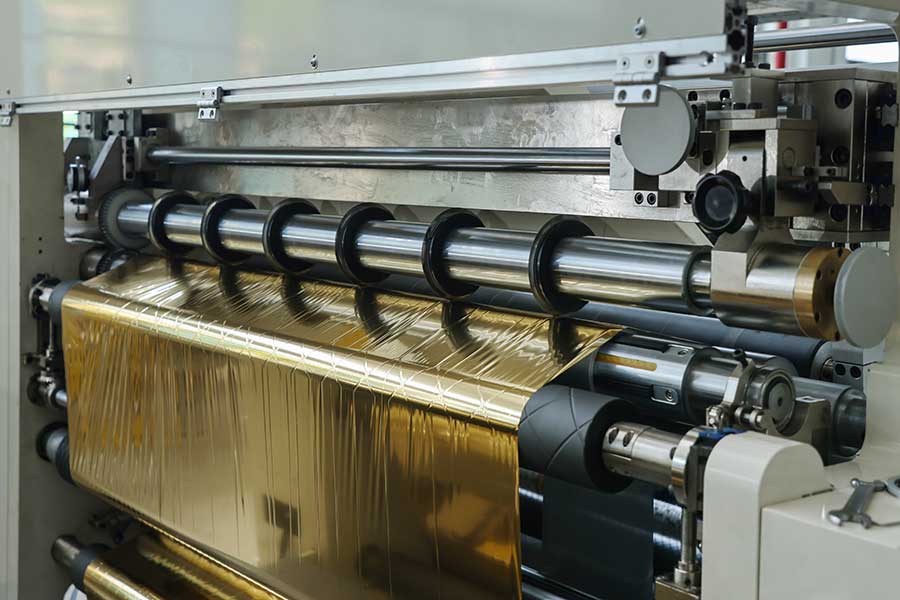
2. Speed (slitting speed)
Definition: The maximum linear speed (unit: m/min) of the slitter operation, which directly affects the production efficiency.
Key Factors:
• Drive system: servo motor (fast response) is better than inverter motor, acceleration and deceleration performance affect stability at high speed.
• Dynamic balance: When running at high speed, the dynamic balance and bearing accuracy of the reeling and unwinding reels need to be matched to avoid jitter.
• Control system: PLC or special controller needs to have high-speed signal processing capability (such as response cycle within 1ms).
• Material adaptability: Thin materials (such as PET film) can reach 600m/min, while thick cardboard may be limited to less than 200m/min.
Trade-off between speed and accuracy:
• Increased speed can lead to increased vibration and tension fluctuations, which need to be compensated by active damping or adaptive control.

3. Tension control
Definition: The control of the tensile force (unit: N or %) of the material during the unwinding, slitting, and winding process to prevent the material from deforming or breaking.
Control mode:
• Open-loop control: preset tension value, suitable for low-speed simple scenes (large error).
• Closed-loop control: Adjust the magnetic particle clutch/servo torque in real time via tension sensor (strain gauge or floating roller) feedback.
• Taper tension: The tension decreases linearly with the increase of the roll diameter during winding, so as to avoid the compression deformation of the inner material.
Key Parameters:
• Tension range: e.g. 5-500N (according to the tensile strength of the material).
• Response time: usually <50ms, high-speed slitting requirements are higher.
Impact Cases:
• Excessive tension during film slitting will lead to tensile deformation, which will affect the subsequent printing registration; If the tension is insufficient, it may be unevenly wound.
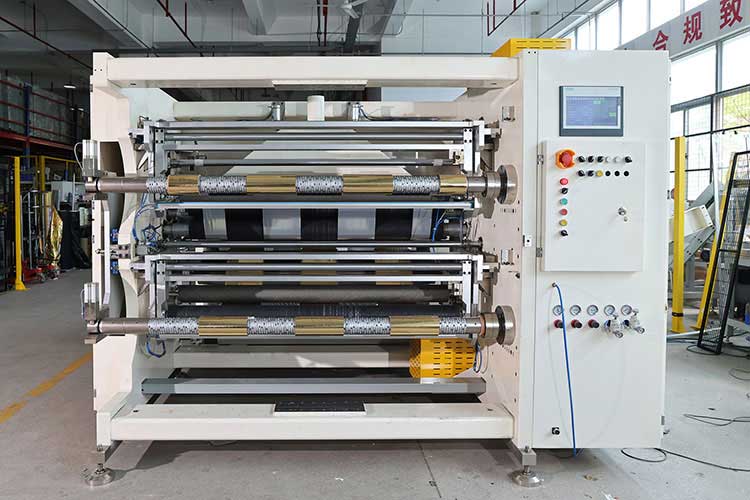
The synergy between the three
1. Accuracy and tension: Tension fluctuations will cause the material to expand and contract slightly, which will directly affect the slitting accuracy. Closed-loop tension control reduces errors.
2. Speed and tension: The inertia increases at high speeds, and faster tension response is required. For example, feedforward control is used to predict roll diameter changes.
3. Speed and accuracy: Usually some of the speed is sacrificed to ensure high accuracy, but the balance can be optimized through highly rigid mechanical design and advanced algorithms such as fuzzy PID.
Selection and optimization suggestions
• High-precision scenarios (such as optical film): Servo drive + pneumatic pressure roller + laser on-line width measurement system is preferred.
• High-speed scenarios (e.g. label paper): Equipped with dual-axis winding switching, active vibration cancellation tool holder.
• Tension-sensitive materials (e.g. non-woven fabrics): Closed-loop control of full floating rollers with self-learning of tension curves.
By understanding the interplay of these parameters, the user can adjust the slitter configuration to the specific material (foil, composite, etc.) and production needs (mass production vs. high precision), or customize special features (e.g., constant tension taper control) through OEM. In practice, it is recommended to find the optimal combination through trial cutting and parameter iteration (such as PID gain adjustment).
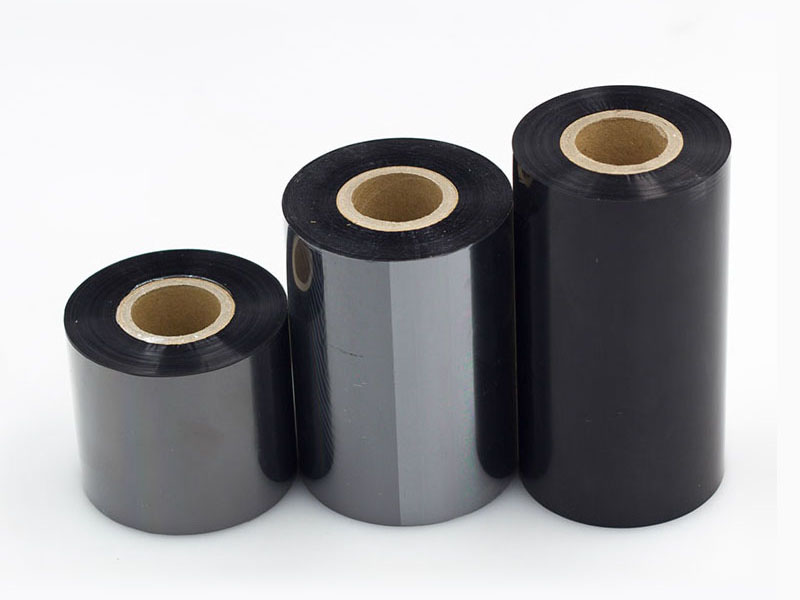 Is your ribbon really "cut" right? Demystify the importance of ribbon slitting machines
Is your ribbon really "cut" right? Demystify the importance of ribbon slitting machines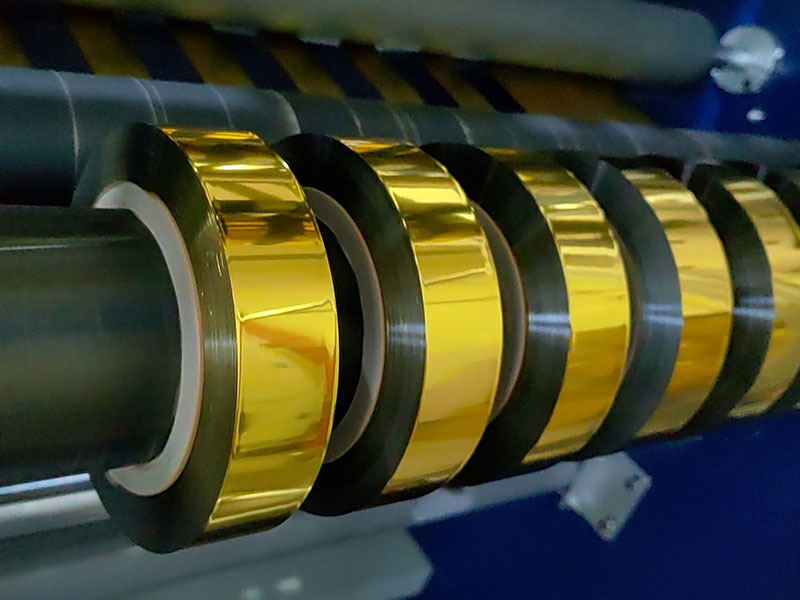 Hot stamping foil slitting machine: a sharp tool to achieve zero waste of hot stamping materials
Hot stamping foil slitting machine: a sharp tool to achieve zero waste of hot stamping materials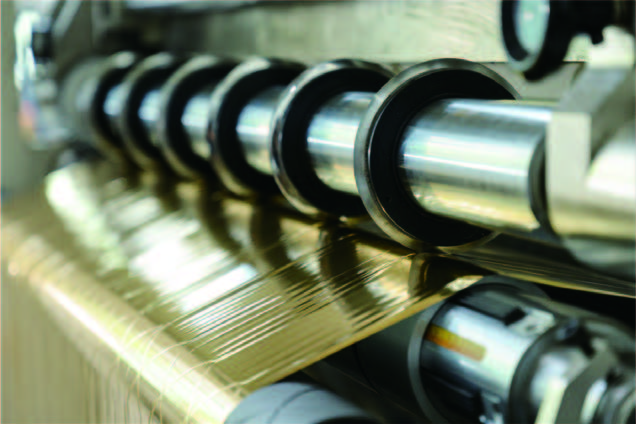 Hot stamping foil slitting machine: precise slitting, enabling efficient hot stamping
Hot stamping foil slitting machine: precise slitting, enabling efficient hot stamping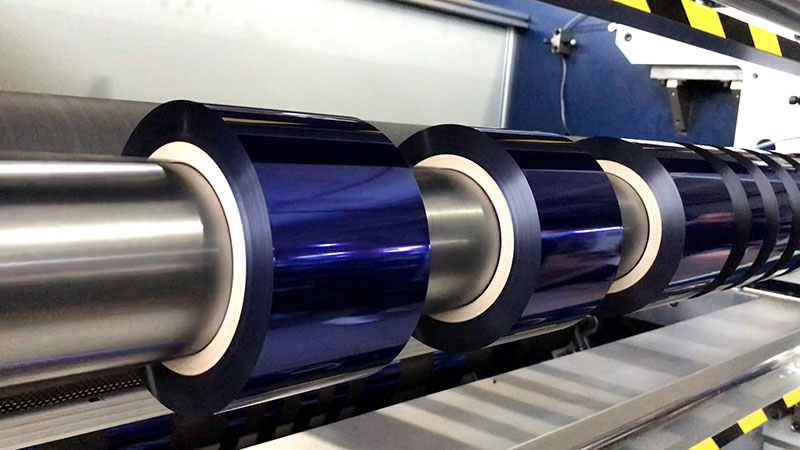 Small machine, big wisdom: the core value of hot stamping foil slitting machine - customization and saving
Small machine, big wisdom: the core value of hot stamping foil slitting machine - customization and saving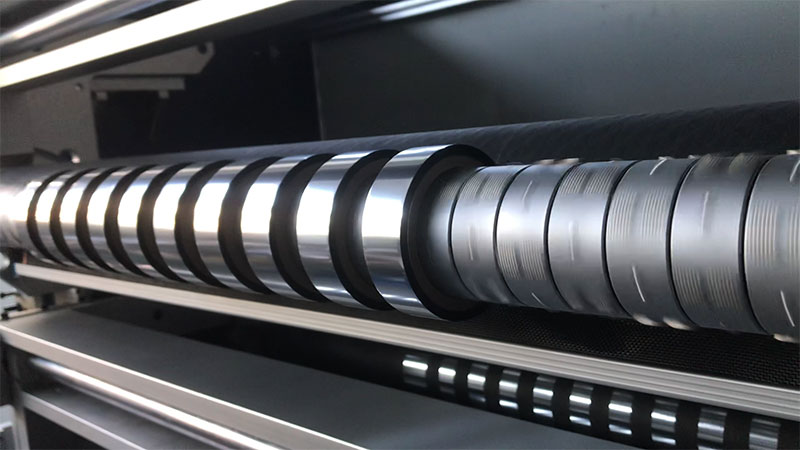 Hot Stamping Foil Slitting Machine: The perfect blend of precision and efficiency
Hot Stamping Foil Slitting Machine: The perfect blend of precision and efficiency